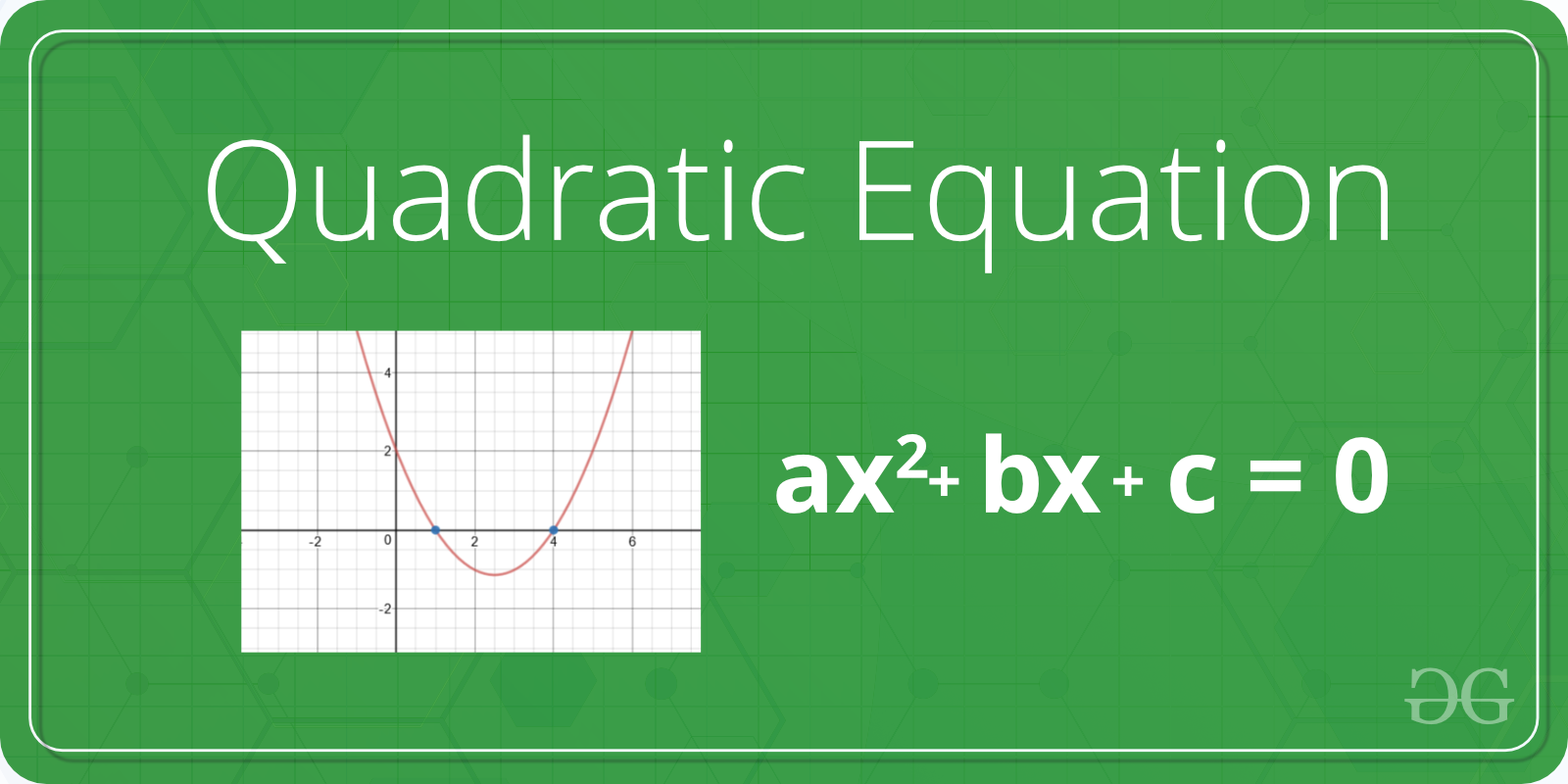A quadratic equation is a polynomial equation of degree 2, which means it contains a term with a variable raised to the power of 2. It takes the form:
ax2 + bx + c = 0
where,
a, b, and c are coefficient and real numbers and also a ≠ 0.
If a is equal to 0 that equation is not valid quadratic equation.
 Examples:
Examples:
Input :a = 1, b = 2, c = 1
Output :
Roots are real and same
-1.0
Input :a = 2, b = 2, c = 1
Output :
Roots are complex
-0.5 + i 2.0
-0.5 - i 2.0
Input :a = 1, b = 10, c = -24
Output :
Roots are real and different
2.0
-12.0
Using the quadratic formula to Solve quadratic equations in Python
Using the direct formula Using the below quadratic formula we can find the root of the quadratic equation. [Tex]x=\frac{-b\pm \sqrt{b^2-4ac}}{2a} [/Tex]
The values of the roots depend on the term (b2 – 4ac) which is known as the discriminant (D). We have three cases of discriminant as given below:
Case 1: D > 0 (b*b > 4*a*c)
- Roots are real and different
- The roots are {-b + √(b2 – 4ac)}/2a and {-b – √(b2 – 4ac)}/2a
- For example, roots of x2 - 7x - 12 are 3 and 4
Case 2: D < 0 (b*b < 4*a*c)
- Roots are complex (not real)
- The discriminant can be written as (-1 * -D).
- As D is negative, -D will be positive.
- The roots are {-b ± √(-1*-D)} / 2a = {-b ± i√(-D)} / 2a = {-b ± i√-(b2 – 4ac)}/2a where i = √-1.
- For example roots of x2 + x + 1, roots are -0.5 + i1.73205 and -0.5 - i1.73205
Case 3: D = 0 (b*b == 4*a*c)
- Roots are real and equal
- The roots are (-b/2a)
- For example, roots of x2 - 2x + 1 are 1 and 1
# Python program to find roots of quadratic equation
import math
# function for finding roots
def equationroots( a, b, c):
# calculating discriminant using formula
dis = b * b - 4 * a * c
sqrt_val = math.sqrt(abs(dis))
# checking condition for discriminant
if dis > 0:
print("real and different roots")
print((-b + sqrt_val)/(2 * a))
print((-b - sqrt_val)/(2 * a))
elif dis == 0:
print("real and same roots")
print(-b / (2 * a))
# when discriminant is less than 0
else:
print("Complex Roots")
print(- b / (2 * a), + i, sqrt_val / (2 * a))
print(- b / (2 * a), - i, sqrt_val / (2 * a))
# Driver Program
a = 1
b = 10
c = -24
# If a is 0, then incorrect equation
if a == 0:
print("Input correct quadratic equation")
else:
equationroots(a, b, c)
Using the cmath module to solve quadratic equations in Python
First, we have to calculate the discriminant and then find two solutions to the quadratic equation using cmath module.
# import complex math module
import cmath
a = 1
b = 4
c = 2
# calculating the discriminant
dis = (b**2) - (4 * a*c)
# find two results
ans1 = (-b-cmath.sqrt(dis))/(2 * a)
ans2 = (-b + cmath.sqrt(dis))/(2 * a)
# printing the results
print('The roots are')
print(ans1)
print(ans2)
Output:
The roots are
(-3.414213562373095+0j)
(-0.5857864376269049+0j)